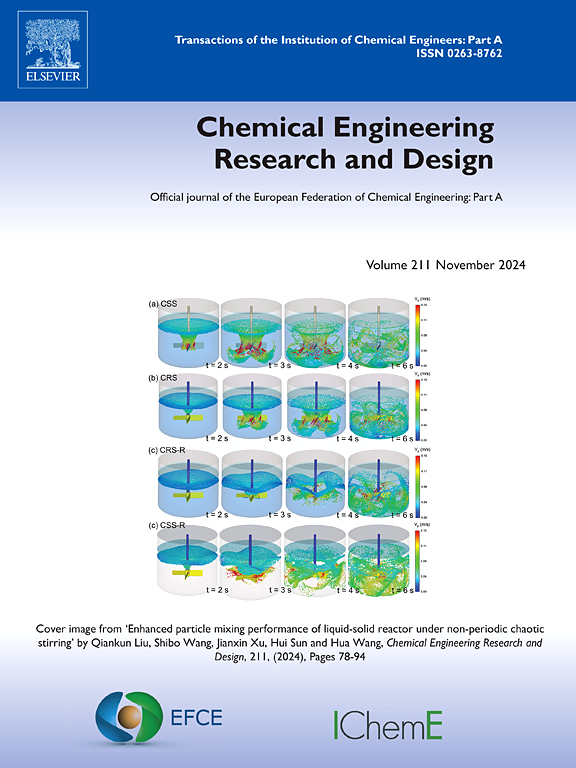Effect of enclosure design with composite/nano-enhanced/dual phase change material on melting response of latent heat storage systems
IF 3.7
3区 工程技术
Q2 ENGINEERING, CHEMICAL
引用次数: 0
Abstract
This numerical work employs the Enthalpy-Porosity methodology to examine the melting behaviour in variously shaped enclosures (of equal area) utilized in the latent heat thermal energy storage (LHTES) units integrated with the phase change material (PCM). Systems of single PCM (n-Octadecane), dual PCM (n-Octadecane as PCM 1 and Capric acid as PCM 2), nano-enhanced PCM (n-Octadecane embedded with the multi-walled CNTs), and composite PCM (n-Octadecane embedded with Cu metal foam) have been compared under 11 distinct enclosure geometries subject to the uniform heat flux of 500 W/m2. The Prandtl numbers (Pr) were determined as 57.1 for liquid PCM 1 and 41.8 for liquid PCM 2. Under the studied parameters, the Grashof number (Gr) ranged from 0.55 × 105 to 5.03 × 105 and the Stefan number (Ste) valued from 0.44 to 0.76, providing key insights into the heat transfer and phase change dynamics of the system. Initial findings reveal a uniform melting rate across all the geometries dominated by the conductive heat transfer. Over time, as the natural convection overshadows conduction, the horizontal rectangular geometry exhibits the fastest melting and thus emerges as the most efficient thermal energy storage system. Notably, in the dual PCM systems, the arrangement of PCM 1 within PCM 2 (configuration-1) suppresses the melting of PCM 2 until its melting point is reached and proves to be the superior to the configuration-2 (i.e., allocation of PCM 2 within PCM 1) where the simultaneous melting of both PCMs is seen. The incorporation of both the multi-walled carbon nanotubes (MWCNTs) and copper metal foam (MF) into PCM matrix significantly boosts the thermal conductivity thereby accelerating the melting rates across all the enclosure shapes with the horizontal rectangle performing the best.
求助全文
约1分钟内获得全文
求助全文
来源期刊

Chemical Engineering Research & Design
工程技术-工程:化工
CiteScore
6.10
自引率
7.70%
发文量
623
审稿时长
42 days
期刊介绍:
ChERD aims to be the principal international journal for publication of high quality, original papers in chemical engineering.
Papers showing how research results can be used in chemical engineering design, and accounts of experimental or theoretical research work bringing new perspectives to established principles, highlighting unsolved problems or indicating directions for future research, are particularly welcome. Contributions that deal with new developments in plant or processes and that can be given quantitative expression are encouraged. The journal is especially interested in papers that extend the boundaries of traditional chemical engineering.
 求助内容:
求助内容: 应助结果提醒方式:
应助结果提醒方式:


